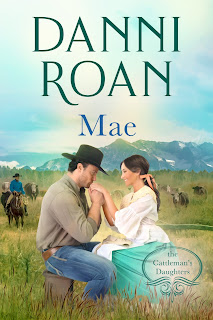For my next four books, my writing has taken me to frontier
Kansas. In particular, I have researched the primary trails and frontier forts
along those trails. For the next several months, I will be sharing with you
regarding the Kansas
Forts along the Smoky Hill Trail.
Today I am starting from the eastern part of Kansas
with Fort Riley. Even though by the time the American Civil War ended, this
part of Kansas was no longer on the frontier, it was a primary supply center
for the forts in western Kansas. Situated along the Smoky Hill Trail in eastern
Kansas, goods traveled by military mule teams, or, more commonly, by contract
freight trains comprised by oxen-pulled wagons to their destinations in the
west.
In the early 1850s the army needed a site
west of Fort Leavenworth to cope with the inevitable clashes between emigrant
tribes, long-established tribes, and Americans who were arriving in greater
numbers. Military officials decided that necessary repairs to Fort Leavenworth,
along the Missouri River in Kansas, would be a waste because it was too far to
the east to enforce boundaries and policies. A more strategically sensible
position was desired.
In 1852,
a troop of the First Dragoons escorted Major
E.A. Ogden went on a reconnaissance mission to find a site for a new post.
Major Odgen found the most promising terrain near the juncture of the Smoky Hill and
Republican rivers, a long-established crossroads of Indian activity. It
was first known as Camp Center, because of its proximity to the geographical
center of the United States.
 |
| Plan for Fort Riley |
Fort Riley is located on the north bank of the Kansas River
three miles from Junction City at the junction of the Republican and Smoky Hill
Rivers. It was located between the Oregon and Santa Fe trails to provide protection
for travelers on overland routes. It was established 17 May 1853 in Kansas
Territory by Captain Charles S. Lovell, 6th U.S. Infantry, on a site
recommended by Colonel Thomas T. Flauntleroy, 1st U. S. Dragoons.
On 27 June 1853, it was designated Fort Riley, in honor of
Colonel Bennett Riley, 1st U.S. Infantry, who led the first military
escort along the Santa Fe Trail and who died on 9 June 1853.
Construction of the permanent cavalry post was commenced in 1855 under the
direction of Captain Edmund A. Ogden, 8th U. S. Infantry.
Soldiers
erected a few temporary buildings in 1853,
but Major Ogden oversaw the principal construction of the permanent buildings of
the fort beginning in 1855. In
July of that year, a cholera epidemic broke in the fort. Although short-lived,
by the time it ended, an estimated 75 to 125 persons in the region died,
including Major Ogden.
 |
| Fort Riley and the Plains Indians |
Even before
the Civil War, soldiers from Fort Riley fought in major campaigns against Indians
as they executed and enforced the laws and policies of the United States government.
Fort Riley was the stage for the Second
Dragoon Sioux Campaign of 1855,
the Cheyenne Expedition of 1857,
the 1860 Comanche and Kiowa Expedition, and the Curtis Expedition of 1864.
With the opening of Kansas Territory in 1854, Fort Riley’s first mission was to protect those Americans settling in the new region. Eventually, it's main function became organizing and drilling
troops and source of supplies. As more forts were established in the west part
of the state, it soon became a supply depot headquarters for the western Army
forts.
As a
cavalry post, the horse trade was especially important. The army had strict regulations
about the quality of horses to be purchased and who might serve as suppliers. Most
of the cavalry horses at Fort Riley came from Fort Leavenworth and St. Louis.
These “American” horses were capable of carrying a 450-pound load.
Fort Riley
also served as the headquarters of the District
of the Upper Arkansas, responsible for the army’s operations and posts
in western Kansas and eastern Colorado under the command of Major General Samuel R. Curtis at Fort Leavenworth who headed the Department of Kansas, which included
the Territory of Colorado, Indian
Territory, and the state of Kansas.
Soldiers from
Fort Riley assisted in treaty arrangements with many Indian nations. Some
agreements were concluded with relative ease, often facilitated by chicanery as
in the cases of the Kaws and immigrant Potawatomis, Shawnees, and Delawares.
Many Indians in Kansas became US citizens through the treaty process, but
others were more resistant to change. These included Cheyennes, Arapahos,
Comanches, and Kiowas. It was because of the resistance from these tribes that Fort
Riley and many of the forts to the west that it supplied fought military
campaigns over the 1860s into the early part of the 1870s to conclude what they
considered meaningful treaties with these tribes. Even after peace treaties
were in place, the problems did not end.
Fort Riley involved itself with policing actions.
Notable among them was their failed efforts to control squatters from taking
over Kaw reservation land in Council Grove. Other
policing actions included incarcerating Indian prisoners, which proved to be
unsuccessful since the facilities were open and its boundaries easily breached.
After the Civil War, troops from Fort Riley were needed to
protect workers constructing the Kansas Pacific Railroad from the Indian
attacks.
In 1887, Fort Riley became the site of the United
States Cavalry School. The famous all-black 9th and 10th Cavalry Regiments, the
soldiers of which were called "Buffalo Soldiers", were stationed at
Fort Riley at various times in the 19th and early 20th centuries.
There were nine major frontier forts established in
Kansas, as well as several smaller, temporary camps. Of those forts, Fort Riley
is one of the two nineteenth century forts still active today.
Starting in the twentieth century, during World War I,
the fort was home to 50,000 soldiers, and it is sometimes identified as ground
zero for the 1918 Spanish flu pandemic, which its soldiers were said to have
spread all over the world. Since the end of World War II, various infantry
divisions have been assigned there. Most notably, from 1955-1996 the post was
home to the famed Big Red One. Between 1999-2006, the post was headquarters to
the 24th Infantry Division (Mechanized) and known as "America's
Warfighting Center". In August 2006, the Big Red One relocated its
headquarters to Fort Riley from Leighton Barracks, Germany.
Notable
people from the nineteenth century at Fort Riley:
Major E.A. Ogden who died in the cholera epidemic to hit Fort Riley in 1855.
In 1864 Major Benjamin S. Henning commanded the U.S. Army’s District of
the Upper Arkansas from Fort Riley.
George A. Custer was stationed at the fort in 1866.
That same year he formed the 7th Cavalry.
Wild Bill Hickok was a scout for Fort Riley starting in 1867.
Today is release day for my novel, Hannah’s Handkerchief, Book 24
in the Lockets & Lace series (also Book 4 in the Atwell Kin series). The
opening chapters take place at Fort Riley. As will my other Atwell Kin books,
an underlying theme involves the situation with the Kaw (Kansa) tribe who made
early treaties with the United States which were not enforced to these people’s
detriment.
To read the book description and find the purchase
link, please CLICK HERE.
Sources:
http://www.vlib.us/old_west/forts.html#riley
Sherow, James E.; Kansas History: A Journal
of the Central Plains
Wikipedia:
Fort Riley


















